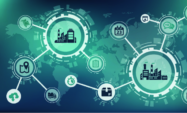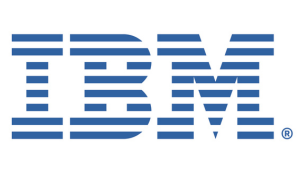EMEA
Filter By
Browse By
- SAP Analytics and AI
- SAP Application Development and Integration
- All SAP Application Development and Integration
- SAP ABAP
- SAP ABAP Development Tools
- SAP ABAP Test Cockpit
- SAP API Management
- SAP BAPI
- SAP Basis
- SAP BRF
- SAP Business Application Studio
- SAP CMS
- SAP Design Studio
- SAP Development Tools
- SAP DevOps
- SAP EAI
- SAP EDI
- SAP Extension Suite
- SAP Fiori
- SAP Fiori Elements
- SAP Integration Suite
- SAP Low Code Application Development
- SAP Low Code Automation
- SAP Netweaver
- SAP Release Management
- SAP UI5
- SAP Web Application Server
- SAP Web IDE
- SAP Business Process Management
- SAP Center of Excellence
- SAP CIO
- SAP Customer Experience
- SAP Data and Data Management
- All SAP Data and Data Management
- SAP BW
- SAP BW/4HANA
- SAP Crystal Reporting
- SAP Data Archiving
- SAP Data Center
- SAP Data Governance
- SAP Data Integration
- SAP Data Migration
- SAP Data Quality
- SAP Data Services
- SAP Data Strategy
- SAP Data Visualization
- SAP Data Warehouse Cloud
- SAP DMS
- SAP Document Control
- SAP EIM
- SAP ETL
- SAP ETL Tools
- SAP HANA
- SAP HANA Administration
- SAP HANA Deployment Infrastructure
- SAP HANA Studio
- SAP Master Data
- SAP Master Data Governance
- SAP MDM
- SAP Enterprise Architect
- SAP Enterprise Asset Management
- SAP ERP
- SAP Finance
- All SAP Finance
- SAP Accounting
- SAP AR AP
- SAP Asset Accounting
- SAP Billing Systems
- SAP BPC
- SAP BRIM
- SAP Cash Management
- SAP Central Finance
- SAP Controlling
- SAP COPA
- SAP Cost Center Accounting
- SAP e-invoicing
- SAP FICO
- SAP Finance Automation
- SAP Financial Closing Cockpit
- SAP Financial Consolidation
- SAP Financial Planning
- SAP FX Risk
- SAP General Ledger
- SAP Global Tax Management
- SAP Hyperion
- SAP Order to Cash
- SAP Payment Processing
- SAP Profitability Analysis
- SAP Rebate Management
- SAP S/4HANA Finance
- SAP Universal Journal
- SAP Governance Risk and Compliance
- SAP Human Capital Management
- SAP Intelligent Technologies
- SAP Platform and Technology
- All SAP Platform and Technology
- SAP Business Technology Platform
- SAP Cloud Connector
- SAP Cloud Integration Platform
- SAP Cloud Migration
- SAP Cloud Platform
- SAP Cloud Providers
- SAP Cloud Strategy
- SAP Container Platform
- SAP Digital Asset Management
- SAP Digital Integration Hub
- SAP Digital Signature
- SAP HANA Enterprise Cloud
- SAP HEC
- SAP Hyperscalers
- SAP Infrastructure
- SAP Messaging
- SAP Smart Forms
- SAP Quality and Testing
- SAP Security
- SAP Spend Management
- SAP Supply Chain Management
- All SAP Supply Chain Management
- SAP APO
- SAP Asset Management
- SAP Business Network
- SAP Digital Manufacturing Cloud
- SAP Digital Twin
- SAP EWM
- SAP IBP
- SAP Inventory Management
- SAP Label Printing
- SAP Logistics
- SAP Manufacturing
- SAP Manufacturing Automation
- SAP MES
- SAP MII
- SAP MM
- SAP MRO
- SAP MRP
- SAP Order Management
- SAP Plant Maintenance
- SAP PLM
- SAP Production Planning
- SAP S&OP
- SAP SD
- SAP SPM
- SAP Supply Chain Planning
- SAP Track and Trace
- SAP Transportation Management
- SAP System Administration
SAP EMEA is the region where the parent company of SAP resides. Founded in 1972, the company headquarters are located in Walldorf in the south of Germany.
What is SAP?
SAP stands for Systems Applications and Products in data processing. SAP has over 100,00 employees worldwide are supporting more than 440,000 customers across 180 countries. It is a global network of customers, partners, employees and thought leaders all helping the world run better and improve people’s lives. About 80% of its customers are small and midsized companies.
SAP EMEA is the region where the parent company of SAP resides. Founded in 1972, the company headquarters are located in Walldorf in the south of Germany.
What is SAP?
SAP stands for Systems Applications and Products in data processing. SAP has over 100,00 employees worldwide are supporting more than 440,000 customers across 180 countries. It is a global network of customers, partners, employees and thought leaders all helping the world run better and improve people’s lives. About 80% of its customers are small and midsized companies.
What does SAP do?
SAP develops software solutions to help organizations of all sizes and all industries run their businesses profitability, adopt continuously, and grow sustainably. The software collects and processes data on one platform, covering everything from raw material purchasing to customer satisfaction. SAP solutions can be installed on premise or used from the cloud helping companies to design and evaluate the entire value chain. They can help to seamlessly link operational data on business processes with experience data, this enables companies to better understand and respond to their customers. SAP strives to drive innovation, high performance, and employee satisfaction with these key values:
- Purpose: To help every customer with a best run business through purpose and profit.
- Vision: Help the world run better and to improve people’s lives.
- Mission: Deliver technology to help the world run better and improve people’s lives.
- Strategy: To enable enterprises to become intelligent, networked, and sustainable – bringing together the solutions.
Total revenue in 2021 was €27.84billion, including €9.4 billion from its cloud business which is expected to reach more than €22 billion by 2025. Today, SAP customers generate 87% of total global commerce. With concern about the climate crisis, the company aims to become carbon neutral in its own operations by year 2023, which is two years earlier than originally planned.
SAP offers application software for businesses such as supplier relationships, production, warehouse management, sales, customer relationships, and administrative functions. Today, SAP has more than 230 million cloud users and more than 100 solutions covering various business functions. SAP’s machine learning, Internet of Things (loT) and advanced analytics technologies help turn businesses into intelligent enterprises. SAP Business Technology Platform brings together application development, data and analytics, integration, and AI into one platform. It is the central element of SAP’s “RISE with SAP” offering.
281 results
-

- SAP Analytics Cloud
 Premium
Premium
Leveraging System Dynamics in Supply Chain Planning
Published: 21/October/2022
Reading time: 5 mins
Any analytics technique or any analytics jargon, whether it's data science or advanced analytics, is eventually all about leveraging data or information to extract insights and knowledge based on specific techniques. However, using defined techniques sometimes leads to challenges or failures when companies try to leverage these algorithms in the real world. The reason we…
-

- SAP Process Analysis
 Premium
Premium
Understanding Agent Based Modeling
Published: 21/October/2022
Reading time: 2 mins
Agent based modeling is a relatively more recent method that originated in the early 2000s. Some of the key drivers behind agent-based modeling coming into the picture were advances in technology and computing power since agent-based models are much more demanding in terms of system capability requirements, the proliferation of computer science techniques like object-oriented…
-

- SAP Inventory Management
 Premium
Premium
Measuring the Bullwhip Effect
Published: 21/October/2022
Reading time: 3 mins
When the pandemic made the demand for certain products skyrocket, we started hearing the term "bullwhip effect" a lot. But the bullwhip effect has existed in supply chains for decades. The fact is, the technology to address this has existed for a few years now. The issue is more rooted in trust among the players…
-
-

- SAP MM
 Premium
Premium
Critical Role of Manufacturing Execution Systems (MES)
Published: 18/October/2022
Reading time: 3 mins
As supply chain challenges increase due to increasing supply chain complexities, organizations are increasingly looking at leveraging data and analytics tools and technologies to help them address their supply chain challenges. Manufacturing plays a crucial role in supply chain networks, and recent events have emphasized its importance in building supply chain resiliency and agility. This has…
-

Tenova Realizes 10% Savings in HR Costs with SAP Talent Management Solution
Published: 13/October/2022
Reading time: 3 mins
Tenova recognized the need for an HR system that could support international expansion and engage an evolving workforce. Strategic decision-making, uniform people management, and common ways of working through policies and procedures were all critical to continued success. Learn how SuccessFactors was leveraged to help Tenova achieve cost savings and efficiency on a global scale.
-

HSBC: Implementation and delivery of Employee Central Payroll in 5 countries
Published: 12/October/2022
Reading time: 2 mins
Six years ago, HSBC embarked on the most complex global HR and payroll transformation ever undertaken. The objective was to simplify the global IT estate, transform payroll operations and provide an optimized employee experience for HSBC staff. Learn how HSBC delivered SuccessFactors EC Payroll for HSBC’s largest payrolls and future-proofed its HR and payroll infrastructure…
-

- SAP Digital Transformation
 Premium
Premium
Maslow’s Hierarchy for Digital Transformation
Published: 12/October/2022
Reading time: 3 mins
We live in an era of Empathy driven innovation and disruption. If you peel the layers of the onion, you will find that technologies being used by many disruptors were not radically new technology. The key driver behind these successful disruptors, in my mind, was the ability to identify a customer need and provide a…
-
-

- SAP EWM
 Premium
Premium
Mobility Solutions in Warehouse Management
Published: 07/October/2022
Reading time: 6 mins
Warehouse operations have always been intricate enough to manage seamlessly and efficiently but COVID-19 pandemic has magnified the challenges. The pandemic has created many “new normal” paradigms and to address these, warehousing executives will need to create scalable systems to accommodate not only unanticipated demand but associated evolutions in the wake of COVID. For example,…
-

- SAP AI
 Premium
Premium
Combining AIoT and Simulation Modeling
Published: 06/October/2022
Reading time: 3 mins
AIoT on smart cameras has the potential to create innovative solutions in many domains. These cameras' capabilities can be paired with other emerging or existing tools and technologies to help create innovative solutions. Therefore, IoT-based analytics will be one of the focus topics in our February 2023 research report, Supply Chain Data And Analytics State…
-

Executive Roundtable: 5 Steps to Modernize Your SAP Landscape to Fuel Continuous Innovation
Modernizing core business applications are among the priorities that SAP customers are focusing on, often this objective is easier to talk about than complete.
Featured Experts
-

Christoph Aschauer
Director for SAP Solutions at Logpoint
-

Ingo Hilgefort
VP Business Analytics at Rizing
-

Robert Holland
Vice President and Research Director, SAPinsider
Become a Member
Unlimited access to thousands of resources for SAP-specific expertise that can only be found here.
Upcoming Events
Related Vendors
Your request has been successfully sent


